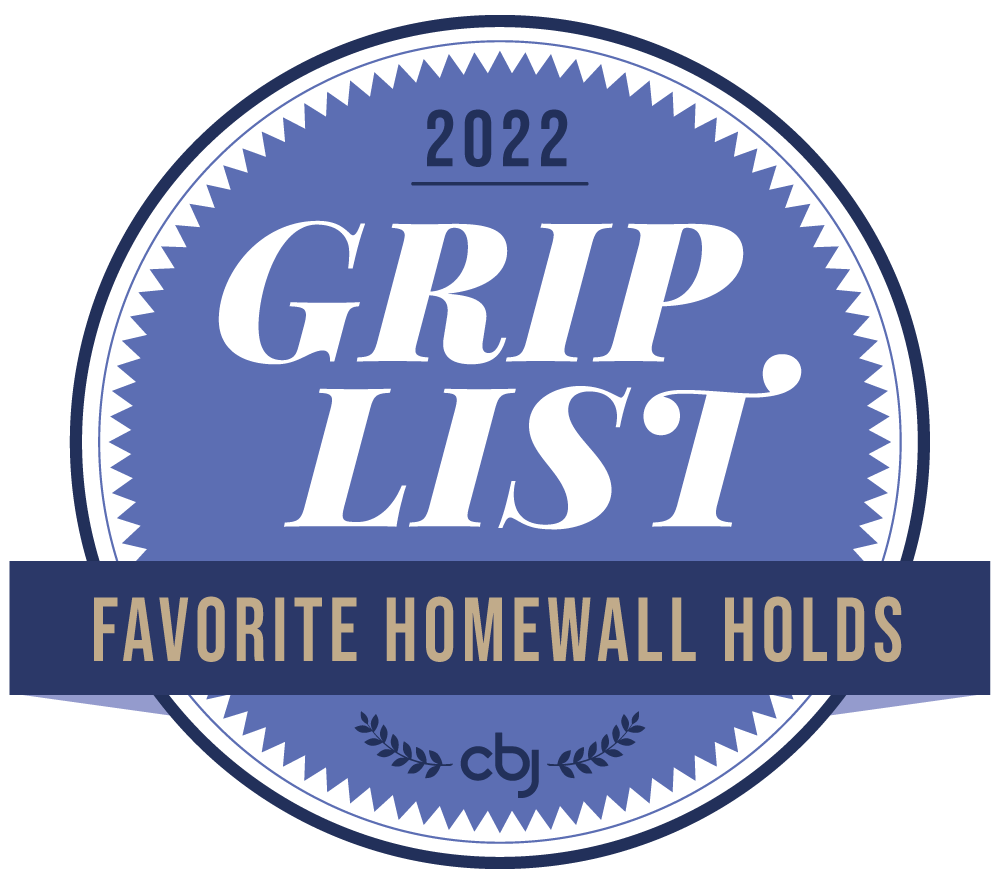Overview
Power endurance (PE) training is the conditioning required for sustained climbing, typically encountered on sport routes and boulder problems. The goal is to set a circuit or boulder problem. If you have fewer than 15 moves on a circuit, you are closer to training Power; if you have more than 40 moves, you have entered Endurance training. The goal is to climb into a forearm burn, resulting in your hands opening up on the holds.
The Holds
Using standardized holds in climbing circuits reduces grip variability found in traditional boulder problems, allowing for subtle adjustments in difficulty. This approach enhances endurance training without the unpredictability of challenging crux moves that can lead to grip failure.
Standardized holds enable climbers to create sustained boulder problems. The ergonomic design of the PE holds that supports your first knuckle, helps prevent injuries even during intense workouts.
Additionally, removing boulder problem crux moves allows climbers to maintain endurance on easier movements while still engaging with challenging holds that don't allow you to recover, which fosters higher levels of power endurance and mental resilience.
Once established, these circuits can be revisited annually to track fitness improvements, and climbers can compare their progress with friends, making training both measurable and competitive.

How to choose the proper set for you
To effectively set your training circuit, begin by examining the difficulty chart, which outlines ideal holds based on wall angle and climbing grade.
1. **Identify Wall Angle:** Determine the angle of your climbing wall, as this will influence the types of holds you should select for your training.
2. **Select Grade Range:** Choose a grade range from beginner to advanced that suits your current climbing level.
3. **Consult the Chart:** Look at the middle column of the difficulty chart to find appropriate holds that match your wall angle and selected grade range.
For instance, if your wall is at a 45-degree angle and you wish to design a circuit within the V5-V6 range, you would look for holds that are either 25-degree or 20-degree incuts. By selecting the correct holds based on this information, you can create a training circuit that is both challenging and suited to your skill level.


 Difficulty Chart.jpg)
Things to Remember
If you have multiple angles on your wall, our chart can help you choose the right incut ranges to achieve your desired grade.
Remember that our chart is subjective and based on testing up to V10, so grades beyond that are educated guesses. The goal is to select holds that match your style. You can decide which footholds to use, consider bump moves as single moves, and adjust rest periods between sets to fit your training.
Avoid choosing holds that are overly incut for your wall; they should feel like edges, not jugs, and should fatigue you within 40 moves.
Training Ideas
Warm-up
It is advisable to engage in a proper warm-up before attempting limit move efforts. Fortunately, the dimensions of these holds facilitate a warm-up routine directly on them. When participating in a power endurance circuit, the recommended approach is to ascend until you feel a slight warmness in your forearms, then safely step off the wall. Ensure that you allow for complete recovery before repeating this several times. The design of these power endurance holds is ergonomic and gentle on the skin, significantly reducing the risk of tendon injuries.
Training Examples
- Circuits (20-40 moves)
- 4x4 (Repeating four problems back to back)
- Limit Bouldering (Trying moves at your limit)
Resting
If you can rest on a hold in your circuit after 20 or 30 moves, meaning you can shake out to prolong a circuit, the holds or circuit are too easy. However, shaking out your forearms while moving is okay, as the forearm burn won't lessen much.
Your rest between sets should be between 1 and 8 minutes. This workout is meant to fatigue you. Having a goal of punching out 40 moves is missing the purpose. It's the "my forearms are on fire" feel you want, so climbing faster has no meaningful purpose in this workout. This workout is about how long you can keep a load on your forearms.
The rest between workouts is subjective. Key workouts like power endurance are usually not as taxing on your body as a power workout. However, we rarely climb to pump failure, so if these workouts are done correctly, we suggest doing them one to two days a week (every 4 to 5 days) for four weeks to see improvement.
Footholds
The size and incut of footholds impact the difficulty of a climbing circuit. Larger footholds make the circuit easier to navigate, while smaller ones demand greater precision and body tension, increasing the challenge.
Atomik's testing used a 1-inch deep foothold without an incut. Adding an incut to the same foothold can change the perceived difficulty within the same V-grade. For instance, a circuit may feel hard at V4 with a standard foothold with no incut but easier V4 with a larger one with an incut.
Our testing showed that larger footholds could increase the number of moves climbed by 20% to 25%, highlighting how small changes in foothold design can significantly affect the number of moves you can do on your circuit.
Footholds we liked
On our 45-degree wall, we liked the 30 Super Small Granite and the medium low-angled model of our Adjustable System Feet. Our higher-end V10+ testers preferred the small version of the Adjustable System Feet as they required more precision and body tension.
On our lower-angled 25-degree wall, intermediate and advanced climbers used the low-angled models, though the climbers' chosen angle varied from neutral to sloping.
When in doubt, please call us at 801-404-0280 or email us at cs@atomikclimbingholds.com and ask one of our experts for advice.
Products specifications
| Total Holds | 5 |
|---|


